-
 +4 +1
+4 +1Two Unusual Galaxies Shake Up the Dark Matter Debate, Again
When it comes to the nature of dark matter, astronomers are still largely, well, in the dark. The existence of this mysterious substance was hypothesized more than 40 years ago to explain discrepancies between the calculations of how galaxies ought to behave, based on their mass, and what was actually observed. In short, it seemed like mass was missing. So Vera Rubin, the astronomer who first discovered this discrepancy, conjured an invisible substance that is far more abundant than “normal” matter and acts as the scaffolding for the large-scale structure of the universe. Today we call it dark matter.
-
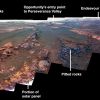 +1 +1
+1 +1NASA releases the final panorama that Opportunity took on Mars
Before a Martian dust storm took out Opportunity in June 2018, the rover was able to capture hundreds of images that NASA has now released as a panorama. The 360-degree photo is composed of 354 images overall, taken by the rover's Panoramic Camera (Pancam) from May 13th through June 10th. It shows the vehicle's final resting place in Perseverance Valley located in Endurance Crater's western rim. The rover lost touch with NASA in June after it reported the approaching storm that ultimately covered its solar panels with dust and rocks.
-
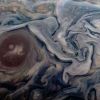 +14 +1
+14 +1New Jupiter photo from NASA’s Juno spacecraft is utterly gorgeous
Our Solar System is full of planets and moons that are quite interesting, varying from dusty rock worlds like Mars to frigid collections of methane lakes like on Saturn’s moon Titan. But of all the objects orbiting the Sun, Jupiter has to be the most interesting to look at. There’s just so much going on in its swirling clouds that you could stare forever and never get bored.
-
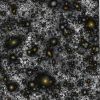 +21 +1
+21 +1The Hubble Telescope's Deep View of the Universe Is Now Even More Astounding!
One of the Hubble Space Telescope's most famous images peered even deeper into the cosmos than scientists had thought. That photo is the Hubble Ultra-Deep Field (HUDF), which combines hundreds of images taken by the space telescope over multiple years into the deepest view of the universe ever created. The composite pic of a small patch of sky contains a whopping 10,000 galaxies, astronomers have estimated. (The HUDF also refers to that patch of sky, not just imagery of it.)
-
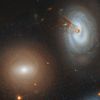 +25 +1
+25 +1Spectacular Hubble Image Shows a Galaxy That Lost Its Spiral Arms
A new study led by Yale University astronomers tells the story of a galaxy that ran out of gas. It’s a story as old as the universe itself: A galaxy is born, brimming with new stars, its spiral arms stretching and curving. But then it runs into trouble, veering too close to the center of a nearby galaxy cluster. The surrounding cluster begins to siphon off the galaxy’s star-making gas, until it loses its spiral arms and becomes a dead relic.
-
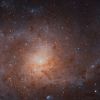 +21 +1
+21 +1NASA Hubble telescope snaps bonkers view of Triangulum Galaxy
The Hubble Space Telescope's mind-blowing new image of the Triangulum Galaxy is almost as gigantic as the galaxy itself. Triangulum, also called Messier 33, can be spotted by lucky skywatchers without an assist from a telescope, but it looks like a smudge. Hubble's vivid view combines 54 images into one image showing the central part of the galaxy and some of its spiral arms.
-
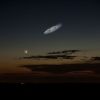 +17 +1
+17 +1If Andromeda Were Brighter, This is What You'd See
Andromeda is the closest large galaxy to us. At 140,000 light years across, it’s 40% bigger than our 100,000 light year diameter Milky Way. Andromeda is 2.5 million light years away from us, or about 25 Milky Way diameters. Light takes 2.5 million years to pass between the two galaxies, so if a fancy Andromeda alien is viewing us with a telescope right now, it’s seeing a bunch of Australopithecus walking around being unappealing.
-
 +2 +1
+2 +1The stunning photo that changed how we see our planet | The Star
“Earthrise,” as it would be called, went viral, or as viral as anything could in 1968, a time that saw all sorts of photographs leave their mark on the national consciousness.
-
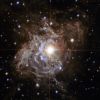 +2 +1
+2 +1Hubble snaps gorgeous image of epic ‘holiday wreath’ in space
Science never stops for NASA but while space observation and research continues regardless of the season or special occasions, the space agency still likes to celebrate holidays in its own unique way. Last week, NASA took the fast-approaching holiday as an opportunity to show off a very special snapshot captured by the Hubble Space Telescope.
-
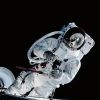 +16 +1
+16 +1Unseen photos of NASA's Apollo space missions
A new book brings together breathtaking photos taken by Apollo astronauts, many of which were previously unpublished.
-
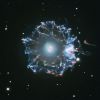 +25 +1
+25 +1Halo of the Cat's Eye
Not a Falcon 9 rocket launch after sunset, the Cat's Eye Nebula (NGC 6543) is one of the best known planetary nebulae in the sky. Its haunting symmetries are seen in the very central region of this composited picture, processed to reveal an enormous but extremely faint halo of gaseous material, over three light-years across. Made with data from ground- and space-based telescopes it shows the extended emission which surrounds the brighter, familiar planetary nebula. Planetary nebulae have long been appreciated as a final phase in the life of a sun-like star. But only more recently have some planetaries been found to have halos like this one.
-
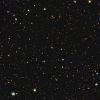 +15 +1
+15 +1Hubble just took a brand new photo that will make you feel completely insignificant
We all might be anxiously awaiting the eventual launch of NASA’s James Webb Space Telescope — which has been stuck in an endless series of delays thanks to the idiots at Northrop Grumman — but the trusty Hubble is still delivering some pretty fantastic views of the heavens. The telescope’s latest snapshot is a real doozy, and it’s going to make you feel like you barely even exist.
-
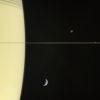 +18 +1
+18 +1Postcard from the Ring Plane
On March 13, 2006 Cassini's narrow-angle camera captured this look at Saturn and its rings, seen here nearly edge on. The frame also features Mimas and tiny Janus (above the rings), and Tethys (below the rings). "Above" and "below" the rings is mostly a matter of perspective here. All three moons and the rings orbit Saturn in roughly the same plane.
-
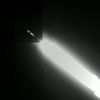 +12 +1
+12 +1NASA's InSight Mars Lander Launches to Probe Red Planet's Deep Interior
The agency's InSight Mars lander lifted off today (May 5) atop a United Launch Alliance Atlas V rocket, rising off a pad here at 7:05 a.m. EDT (1105 GMT, 4:05 a.m. local California time) and disappearing into the thick predawn fog moments later. "This is a big day. We're going back to Mars," NASA's new administrator Jim Bridenstine, who took charge of the agency last month, said in a congratulatory call to the InSight team after launch. "This is an extraordinary mission with a whole host of firsts." [Launch Photos: See NASA's InSight Soar Toward Mars]
-
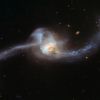 +8 +1
+8 +1These Photos From the Hubble Space Telescope Show Two Galaxies Colliding in Spectacular Fashion
Even after more than 27 years in space, the Hubble Space Telescope can still take one heck of a photo. The image above was taken earlier this year and shows two galaxies merging into one. Described by the European Space Agency and NASA as a "twisted cosmic knot" in the constellation Cancer, it's about 250 million light-years from earth. The new galaxy, called NGC 2623, has the unique knot shape because of a collision between two previously distinct galaxies.
-
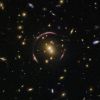 +15 +1
+15 +1Hubble Finds an Einstein Ring
These graceful arcs are a cosmic phenomenon known as an Einstein ring - created as the light from distant galaxies warps around an extremely large mass, like a galaxy cluster.
-
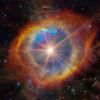 +17 +1
+17 +1A star has been seen exploding faster than any other on record
The quickest supernova we’ve ever seen went from invisible to extraordinarily bright in only 2.2 days. It is the first of these speedy stellar explosions that’s been observed thoroughly enough to help us figure out exactly how they work. Supernovae are massive explosions that happen when a star burns out. They usually take weeks or months after the death of the star to reach maximum brightness, and even longer to fade away.
-
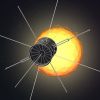 +1 +1
+1 +1“A Spacecraft for All”: The Journey of the ISEE-3.
Launch into space with a Chrome Experiment that follows the entire 36-year- long odyssey of the ISEE-3. See its entire path as an interactive documentary, read its instruments, and view its live trajectory and position as it flies through interplanetary space. spacecraftforall.com
-
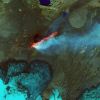 +30 +1
+30 +1The Week's Coolest Space Images
Every day satellites are zooming through space, snapping incredible pictures of Earth, the solar system and outer space. Here are the highlights from this week.
-
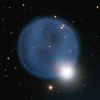 +18 +1
+18 +1A stellar bubble
This eye-catching image of the planetary nebula Abell 33 was taken by astronomers using the European Southern Observatory’s Very Large Telescope in Chile. Created when an ageing star blew off its outer layers, this beautiful blue bubble is, by chance, aligned with a foreground star. This cosmic gem is unusually symmetric, appearing to be almost perfectly circular on the sky.
Submit a link
Start a discussion




















